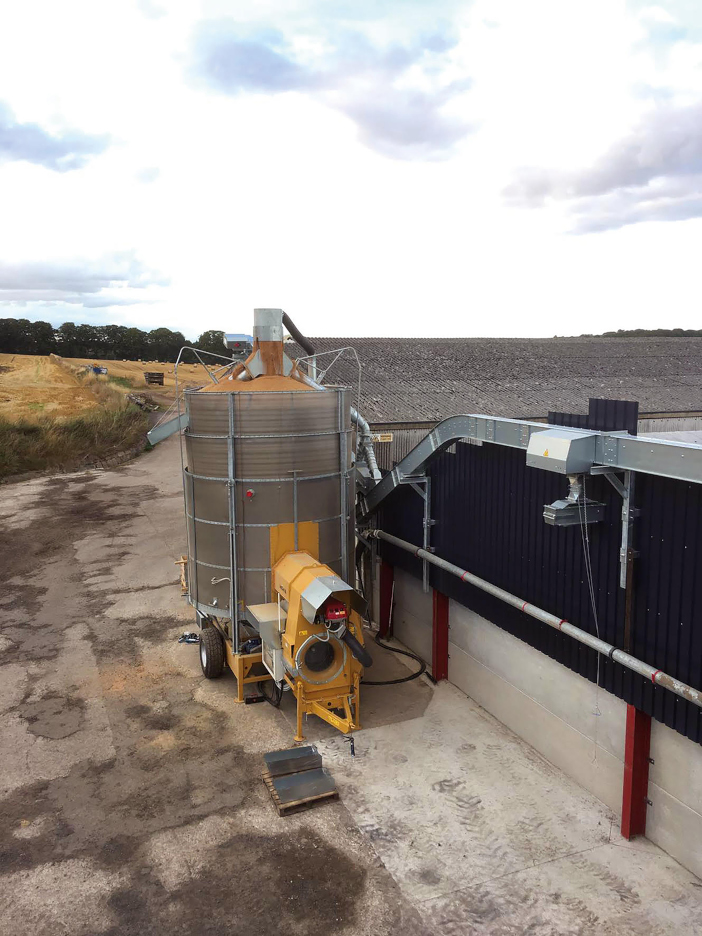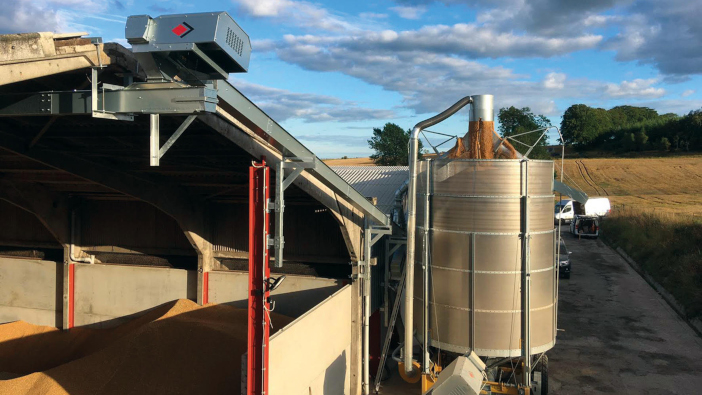An increase in arable hectares and the combine capacity has led to Dunecht Home Farms needing to upgrade and streamline its grain handling system.
Owned by the Hon Charles Pearson, Dunecht Home Farms currently farms 6,500ha of land between the Dunecht Estate and Edinglassie Estate. The Lowground operation, approximately 1,000ha, grows a mixture of arable crops: spring barley for the local malt whisky industry, winter wheat and barley for livestock feed (100 cows, 20 breeding heifers, and 400 ewes – the hill farming operation has 2,000 ewes) winter oats for milling and oilseed rape for the vegetable oil industry.
Chris Lovie, farms manager, said: “Our drier was aged and the drying facility consisted of small bins which were very labour intensive. To completely empty the last ton from each, we had to manually sweep the grain across the bottom of the bin to the outlet. With limited storage capability adjacent to the drier we also had to triple handle grain to and from the drier and into storage at other locations, which again meant there was a lot of labour involved.”
Having initially looked at constructing a new grain handling plant, the increasing price of steel prohibited this and the focus moved to converting three adjoining Atcost under-utilised 1970s cattle sheds. After conducting extensive research around the choice of drier, Mr Lovie decided to install a Mecmar batch grain drier. He worked with McArthur Agriculture, through its partner Sellars Agriculture, on the design of the new grain processing plant and chose to install a Mecmar S35t electric, automatic batch drier which incorporates an aspirator grain cleaner, and Skandia Elevator AB handling equipment.

A Skandia 60tph wet grain chain and flight intake conveyor feed the Mecmar drier and once the grain is dried and cooled it is transported to three grain storage sheds via five additional 60tph chain and flight conveyors. Each shed has a conveyor running along its length, one of the conveyors leaving the drier feeds sheds numbers one and two, whilst the other conveyor feeds shed number three. The positioning of the drier between sheds one and two and shed three means that there is only ever the need to run two conveyors at any time. The destination of each batch of grain is determined via the Mecmar’s control panel.
Mr Lovie said: “The new plant has transformed harvest. We have increased our drying and storage capability and reduced the need for additional harvest staff and associated labour costs. The automation of the Mecmar means that labour around drying and putting the grain into store is virtually non-existent and grain leaving the store can be easily handled with a telehandler.”
“The team needed little training as the system is simple to operate and maintenance is minimal. With the all-important return on investment in mind, we have a much larger grain plant than we had envisaged when considering building a new one, for significantly less investment.”
Mr Lovie’s advice to others looking to build a new grain plant, convert existing buildings or upgrade an existing plant, is to carefully research the options and engage with proven grain handling experts.
“Working with the right people, on the right designs meant that our initial planning application was made in April 2021 and the plant was up and running for harvest 2022.”


